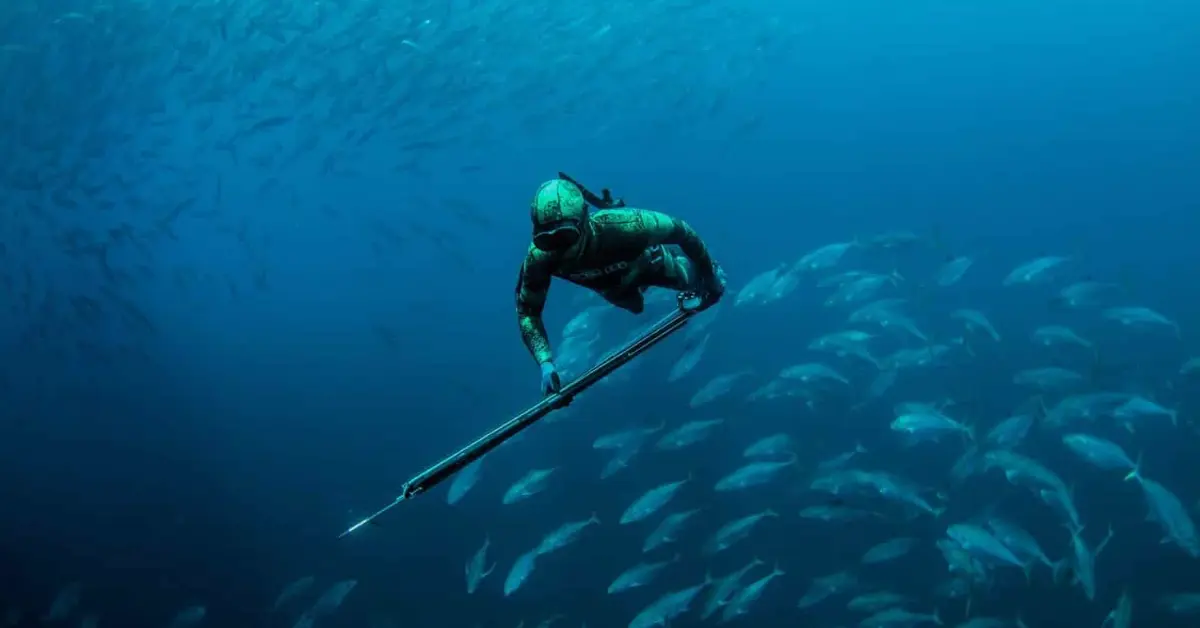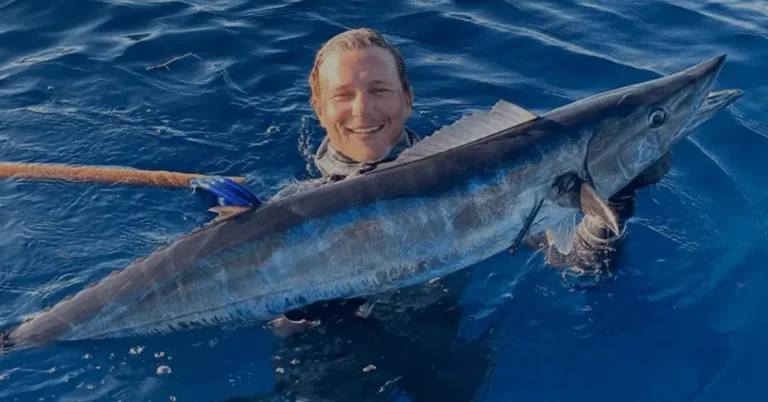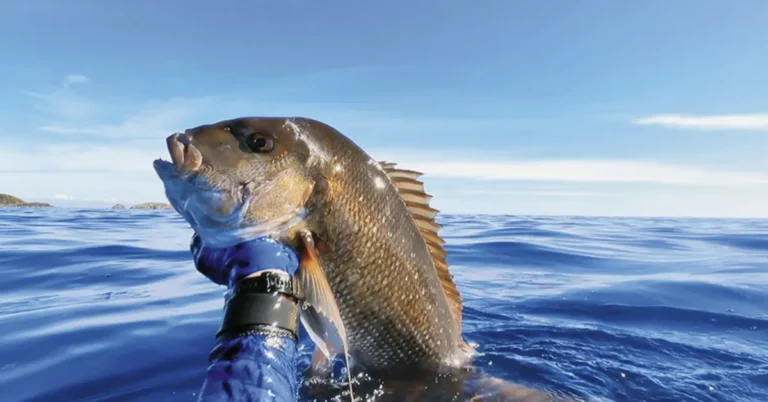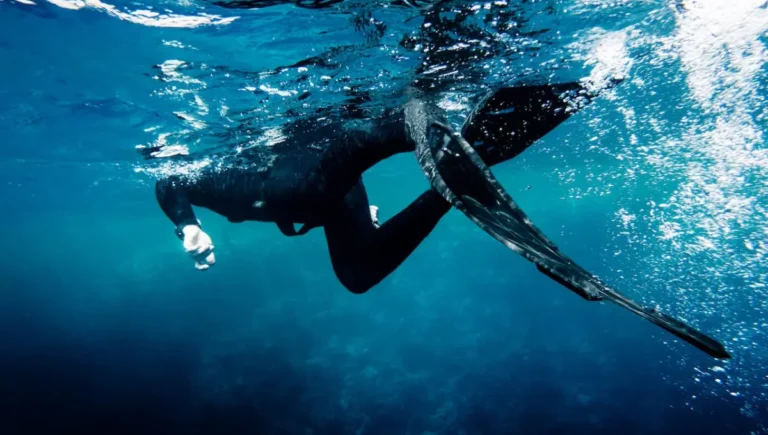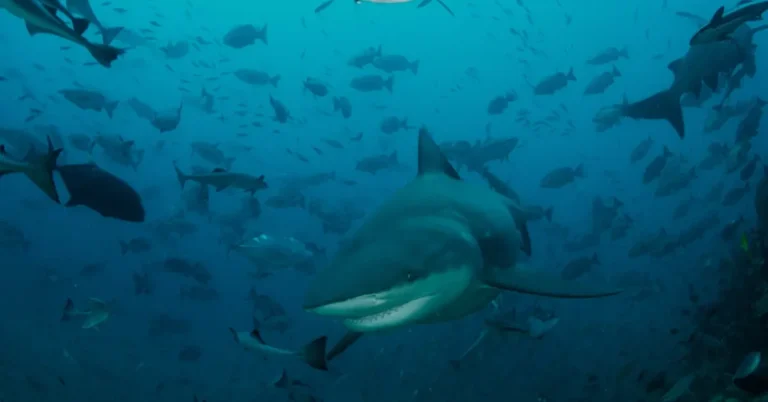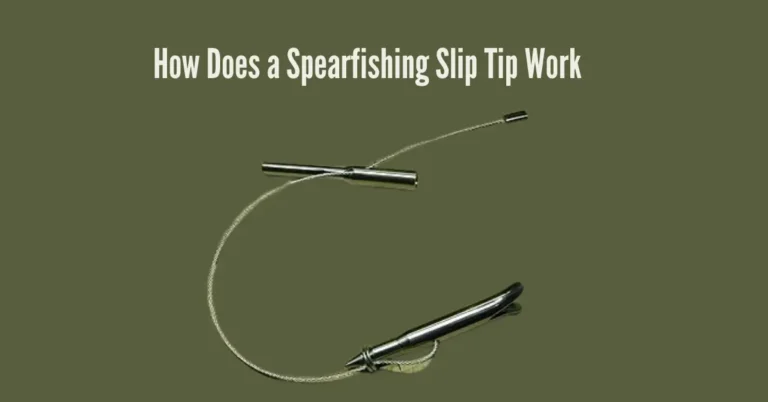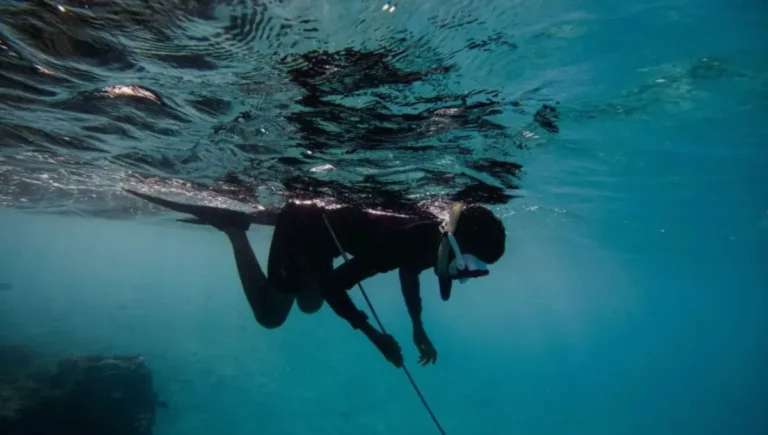Spearfishing Equipment List: Everything You Need to Get Started
When you’re spearfishing in the ocean, your gear list might change depending on where you are. But generally, there are some important items you should have.
Your speargun is crucial, but there are other essential pieces of equipment too. This guide will help beginners make their gear list and remind experienced spearfishers as they prepare for the season.
Also Read: The Best Speargun for Beginners in 2024 [Tested & Reviewed]
Basic Spearfishing Equipment List
There are several essential pieces of equipment necessary for every dive.
Spearfishing License
Before fishing, get a license, which varies by place. In Rhode Island, the saltwater license is enough. Elsewhere, might need other licenses. Use the link for US states. Spain needs a health check for a spearfishing license.
Important to know for Spain trips. Spearfishing needs fitness as you dive underwater for a long. Holding breath and diving requires stamina. Don’t underestimate the effort needed. What speargun to choose? Choose wisely for a successful fishing trip.
Spearguns, Hawaiian Slings, and Pole Spears
In spearfishing, there are various tools you can use, like spearguns and pole spears. Everyone has their favourite method, and there’s no one “correct” choice—it’s all about personal preference.
However, it’s crucial to know the rules of your fishing location. Some places may not permit spearguns but allow pole spears, so understanding local laws is essential.
Speargun
In Rhode Island and the Florida Keys, I enjoy using a traditional speargun, particularly my Rob Allen Railgun. It’s my personal favourite because it suits the size of fish I typically target.
In Rhode Island, the fish I aim for range from around 16 inches to 36 inches, which are considered medium-sized. My snapper railgun works perfectly for these fish.
Pole Spears
Many folks find pole spears handy for spearfishing. These are long spears with a rubber band attached at the back. To use one, you pull the rubber band forward while holding the pole to build tension, then aim and release to shoot the spear. Pole spears have fewer parts and require you to get closer to the fish, making them a bit trickier to use.
However, they’re often recommended for beginners because of their simplicity. Unlike spearguns, which have many moving parts, a pole spear has just the spear and a rubber band for power. Hawaiian slings work similarly to pole spears and are another basic tool for spearfishing.
Hawaiian Slings
Hawaiian slings are like pole spears, but with a key difference: they have a spear holder where the rubber band is attached, instead of directly onto the spear. You load the spear by pulling it and the band backwards, offering more control than a pole spear. Some Hawaiian slings even have pistol grips for better aiming, similar to a speargun.
Regardless of your choice of spearfishing tool, it’s crucial to practice loading and unloading it properly. You don’t want to be struggling with it in rough waves, especially if it’s your first time using a speargun.
Spearfishing Mask and Snorkel
Having a mask and snorkel is essential for underwater visibility and breathing while spearfishing. I strongly suggest investing in good-quality ones. After using cheaper options for a long time, I realized the value of a $50 mask—it doesn’t leak, fog up, and stays comfortable for hours. A quality mask is key for an enjoyable diving experience.
Similarly, a good snorkel is important. Many prefer soft rubber ones, while others like ones with splash protectors, which can be a bit noisier but are useful in wavy conditions. Whatever you choose, ensure it’s comfortable both on your head and in your mouth.
Spearfishing Fins
Having fins is crucial for swimming efficiently in the ocean. Just like with masks and snorkels, investing in good-quality freediving fins can make a big difference in comfort and performance. I spent around $130 on my Seac Motus fins, and they completely changed my diving experience.
Before, when I used shorter scuba diving fins, I had to exert more effort and was slower. With nicer fins, you can move more easily and even dive deeper. Next up in importance are spearfishing gloves.
Spearfishing Gloves
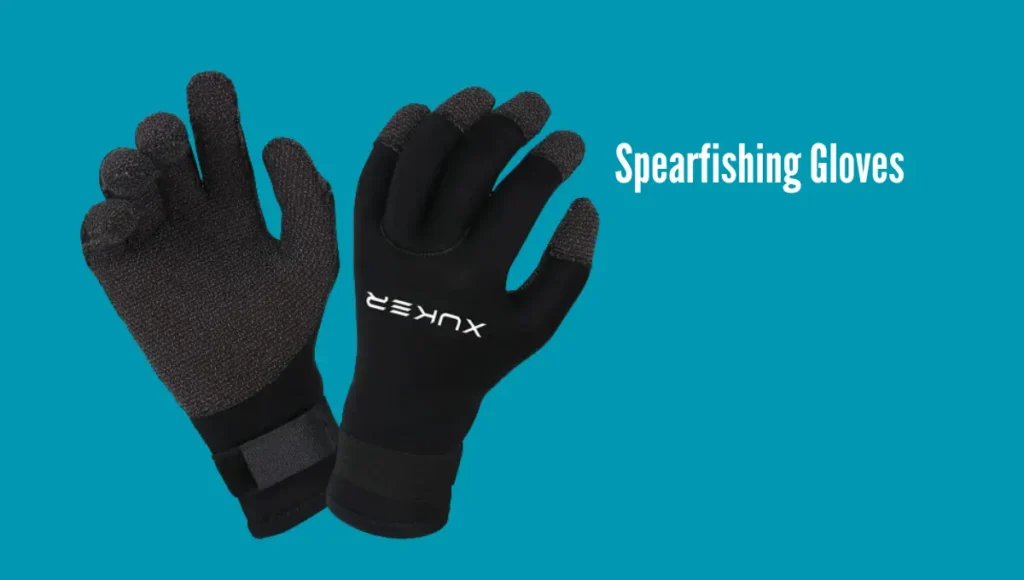
You might think you don’t need gloves if your speargun is smooth and you’re diving in sandy areas, but that’s not true. Forgetting gloves can lead to painful consequences. Fish have spiky fins, rocks are sharp, and there are many hazards while spearfishing that can cut your hands.
It’s crucial to choose the right type of gloves. In warm water, lighter garden gloves work well for me, while in cold water, thick neoprene spearfishing gloves are better. Regardless, always have gloves with you. Fish gills are sharp and can easily cut your hand if you’re not careful.
Spearfishing Wetsuit
Depending on where you live, a wetsuit might be necessary for spearfishing, as you spend a lot of time in the water. Wearing a wetsuit also helps when loading a speargun, as it prevents the gun from digging into your chest and causing bruises. From personal experience, I can say that using a wetsuit or a chest cover is worth it.
The type of wetsuit I use depends on where I’m spearfishing. In Rhode Island, I use an O’neill wetsuit with a Rob Allen chest protector. For spearfishing trips in the Florida Keys, I opt for a 2/1mm shortie wetsuit. I usually pair it with a chest protector for added comfort when loading my gun.
Spearfishing Weight Belt
If you’re wearing a wetsuit, you’ll need a weight belt. Its purpose is to achieve neutral buoyancy, making it easier for you to swim down to the bottom. The amount of weight needed varies from person to person. We’ve created a weight belt calculator to help you figure out the right amount of weight for you.
Spearfishing Booties
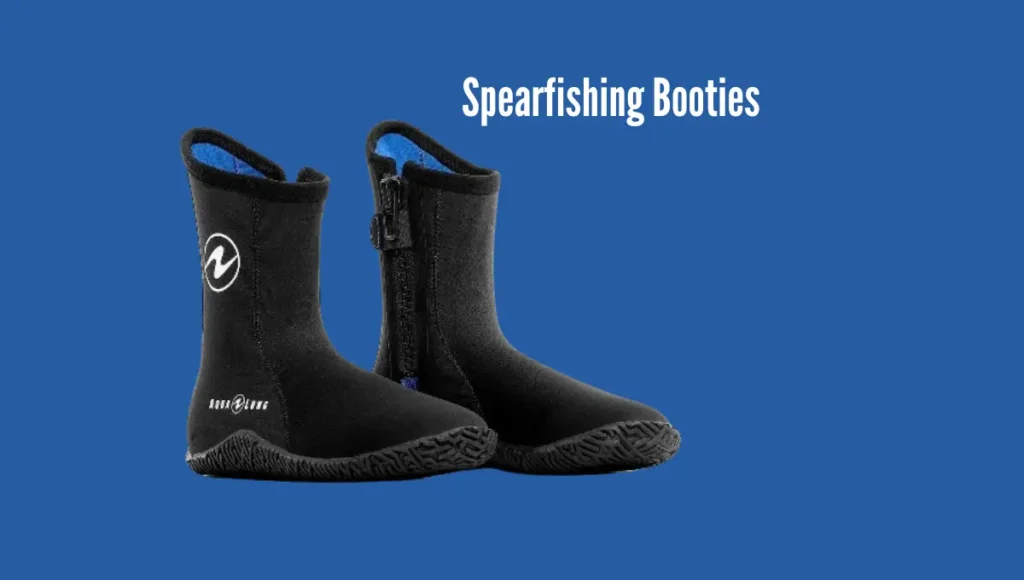
While not everyone wears booties for spearfishing, they’re essential for me, especially when spearfishing from shore. In places like Rhode Island, where I often walk on rocky terrain to get into the water, booties protect my feet from getting torn up. If you’re diving from a boat, whether or not you use booties depends mainly on the size of your fins.
I usually wear dive socks when spearfishing. They offer foot protection without being bulky, allowing me to wear higher-end fins that don’t accommodate full-size booties. However, dive socks don’t last long because they’re thin, and they don’t provide much warmth. In cold water, it’s better to opt for real booties.
Dive Knife
A dive knife is one of the most crucial tools to have while spearfishing. Some divers even carry two knives for added safety. It serves multiple purposes, with the most important being your safety. When spearfishing, you often find yourself near rocks, lobster traps, and other underwater obstacles. If you get tangled in any of these, a sharp dive knife is essential for cutting yourself free quickly.
Dive knives also play a role in dispatching fish. After shooting a fish, it’s important to kill it immediately and bleed it. This preserves the meat and ensures humane fishing practices. Leaving a wounded fish swimming around is not only inhumane but also unethical in spearfishing.
Spearfishing Dive Flag
Dive flags are essential for spearfishing, often required by law. It’s best to choose one that also serves as a float, as it enhances safety significantly. A float allows you to rest if you’re tired or encounter any issues while spearfishing. It provides buoyancy if you’re carried away by the tide, helping you conserve energy.
Additionally, attaching your speargun to the float prevents you from losing it. In places like Rhode Island, where I dive in 20 feet of water, releasing the gun is common, especially when fish swim into rocky crevices. A float line ensures you don’t lose your gun in such situations. Remember, a float line is necessary with any dive flag.
Spearfishing Float Line
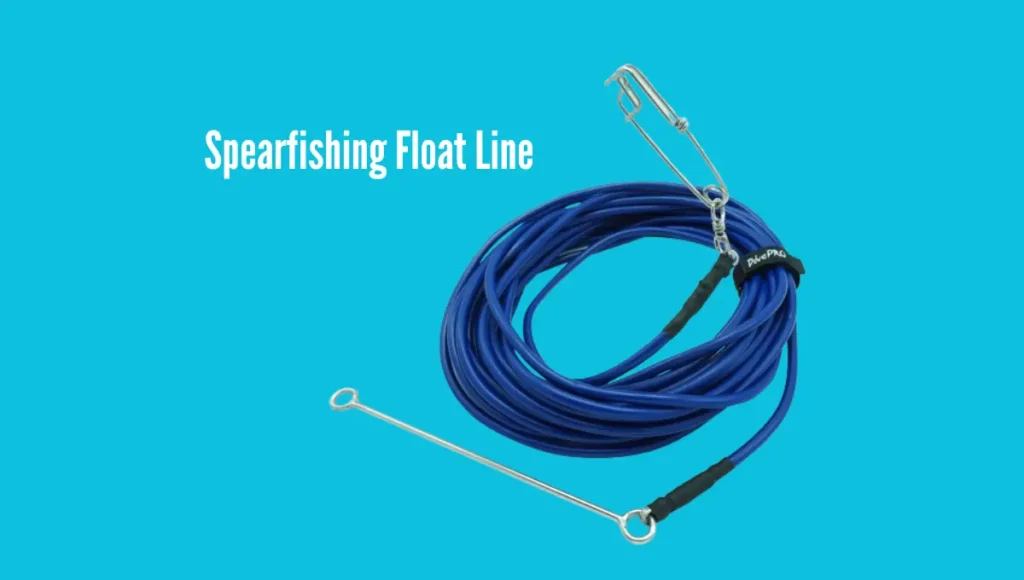
A float line is a straightforward component that connects your speargun to your float. It’s crucial to choose a float line that doesn’t tangle easily and won’t cause injury if it becomes tight unexpectedly.
When buying a float line, consider the depth of your dives. For depths of 60 feet or more, you’ll need a float line that’s at least 60 feet long.
Spearfishing Fish Stringer
A fish stringer is another important item to bring when spearfishing. While everyone has their way of handling fish after catching them, it’s essential to have a plan. If you have a boat nearby, tossing the fish onto it works well.
But if you’re diving far from the boat or don’t have one, you’ll need somewhere to keep your fish. I use a stringer attached to my dive float, while others, like my father, used to keep fish on a stringer around their waist. It’s all about personal preference, but having a plan is key!
A Diving Buddy
Diving alone is risky, especially if you’re new to spearfishing. It’s always better to have a buddy with you. My wife enjoys snorkelling while I dive, even though she’s not into hunting. She’s there to help if I encounter any problems. If you’re struggling to find a dive buddy, try looking for spearfishing forums or Facebook groups.
Dive Computer
Investing in a freediving watch can be a smart move for your spearfishing adventures. The best ones help you track your depth, dive times, and even your training progress. When choosing a watch, make sure it’s easy to read and understand underwater. Some watches come with extra features like a heart rate monitor and the ability to download dive data.
Look for one with long-lasting batteries and avoid overly complicated models, especially if you’re new to diving. Popular brands like Cressi, Suunto, Mares, Oceanic, Omer, and Sporasub make dive computers specifically for freediving and spearfishing. You might also consider the Sherwood Amphos Air Computer, which works for both spearfishing and technical scuba dives.
Float lines, Floats, or Reels
After catching a fish, what if you’re tired and it starts swimming away? Instead of struggling, you have two options. You can attach a float line to your speargun to pull both the fish and your gun or use a reel to bring the fish in once you reach the surface.
Using a reel is often recommended because it prevents your gun from slipping out of your hands, especially with large and strong fish. For example, the Omer Match Sports Reel is a good choice, with a belt fitting and a line capacity of 50 meters, ensuring your gun and fish stay secure.
Conclusion
Spearfishing requires careful consideration of essential equipment for safety and success. While preferences may vary, certain items like masks, snorkels, fins, and gloves are universally important. Additionally, tools like spearguns, dive knives, and fish stringers enhance the experience. Safety gear such as dive flags, float lines, and dive watches are vital for preventing accidents.
Reels and float lines are essential for managing catch retrieval efficiently. By investing in quality equipment and staying informed about local regulations, spearfishers can enjoy their sport responsibly while minimizing risks. Always prioritize safety and choose gear that suits your needs and preferences for an enjoyable spearfishing adventure.
